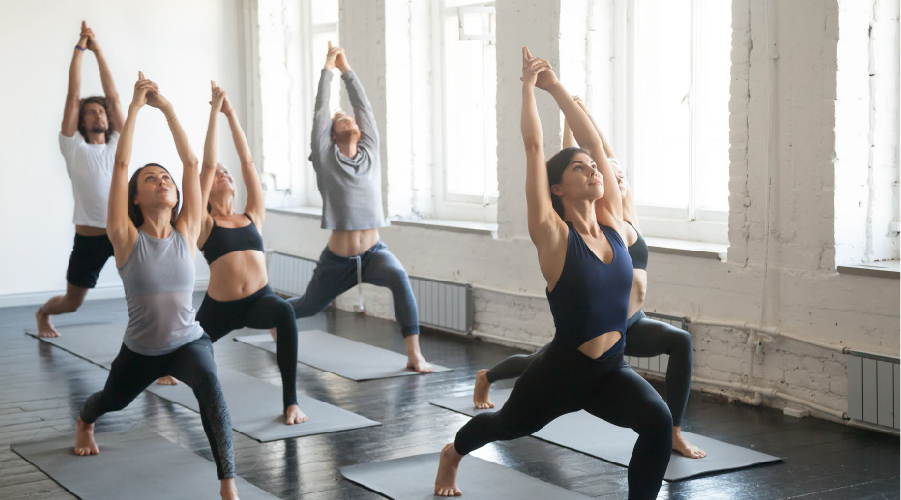

Yoga is an ancient and intricate set of physical postures and exercises designed to improve one’s physical, mental, and spiritual state of being. The origin of yoga can be traced to Vedic India, where it was established as one of the six orthodox philosophical schools of Hinduism. Over the years, yoga has spread to various countries and taken several forms, each with its own set of goals, discipline, and focus, the most recent of which is power yoga.
Power yoga is a form of yoga workout that was designed with the intention of improving one’s strength and endurance. It features yoga posing that helps burn a significantly larger number of calories in a short period of time. The origin of power yoga has been linked to Vinyasa Yoga, which itself is a variant of Ashtanga Yoga, a 20th-century practice.
Unlike the other forms of yoga, power yoga was created to maintain a steady flow between each of its exercise poses, creating a fixed pattern of movement. The fast-paced shifts in these movements have been shown to link the body’s motions to one’s breathing itself. This is also a major difference between yoga and exercise. However, owing to its alignment towards the physical aspect rather than the mental one, power yoga workout has been classified as a dynamic activity than a meditative one.
Let us understand more about power yoga and how incorporating it into your daily regime can have an impact on your lifestyle.
Health Benefits Of Power Yoga
Performing just fifteen minutes of power yoga exercises a day can have several important benefits for your health. These include:
- Boosts Immune System: Studies have shown that performing power yoga can help stimulate the lymphatic system, which is the body’s first line of defense against several diseases. By balancing the way that your lymphatic system works, power yoga not only boosts the immune system but also prevents the risk of developing diseases such as arthritis, skin conditions, and digestive disorders.
- Regulates Hormone Secretion: Research has shown that certain poses of power yoga can be beneficial in stimulating the adrenal, pituitary, and thyroid glands, which are responsible for secreting hormones such as TSH and adrenaline.
- Improves Lung Capacity: Power yoga has been shown to be beneficial for those diagnosed with asthma and other lung-related breathing disorders by gradually increasing the capacity of our lungs. The rigid postures combined with the deep and slow breathing patterns also allow an increased flow of oxygen throughout the body.
- Aids Weight Loss: Power yoga is a great alternative for those who do not prefer going to the gym. This at-home yoga is technically a cardio workout, that offers a great way to burn off those extra calories. This is helpful for kick-starting the body’s metabolism, which helps in burning the calories even when you are not exercising. Additionally, power yoga exercises for weight loss also help in making one more aware of what they are consuming, which helps in reducing hunger pangs and making better nutritional choices.
- Reduces Stress: One of the primary reasons behind the evolution of yoga was to create a sense of calm, focus, and peace. Even though power yoga is a dynamic form of meditation, studies have shown that just performing fifteen minutes of it is beneficial for reducing the secretion of cortisol, a hormone that causes stress in the body.
- Improves Strength: Power yoga instructions often require the practitioner to hold the same pose for an extended period of time. This helps in stretching your muscle fibers to their limit, thereby increasing your body’s endurance and muscle strength over time.
Yoga is also best for Anxiety And Stress. Power yoga has been proven to alleviate the symptoms of neurodegenerative diseases. A study conducted in 2016 showed that people diagnosed with Parkinson’s’ disease reported a significant improvement in their muscle rigidity and tremor response.
Fifteen-Minute Sample Workout
The following yoga workout has been designed to stimulate both your upper and lower body, with a focus on the abs and the legs. Repeat the following yoga and exercise poses for three whole sets of five minutes each:
- Start off withholding The Cat-Cow Pose for five deep breaths, or one minute.
- Gradually transfer to the Downward Facing Dog, also for one minute. Remember to breathe through your nose loudly and work into the posture.
- Perform three rounds of side bends on each side and move on to the Chair Pose. It is important to maintain your posture while doing this.
- Finish your set with the Interleaved Forward Fold and hold your position for a minute on each rep.




